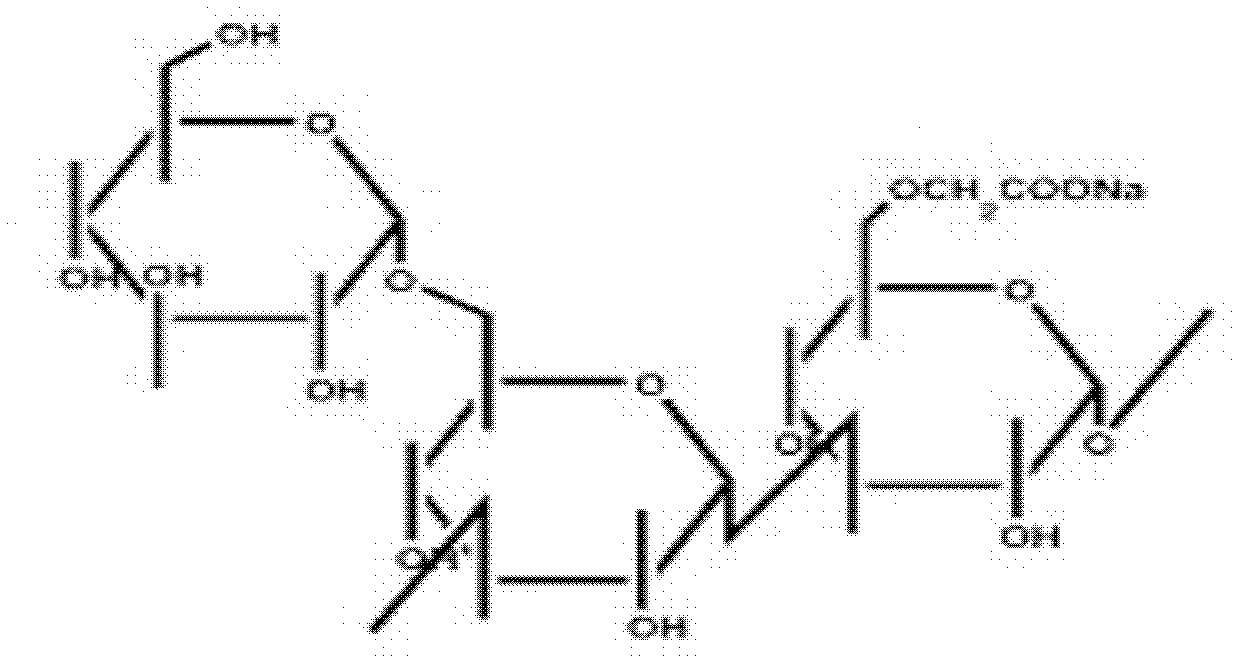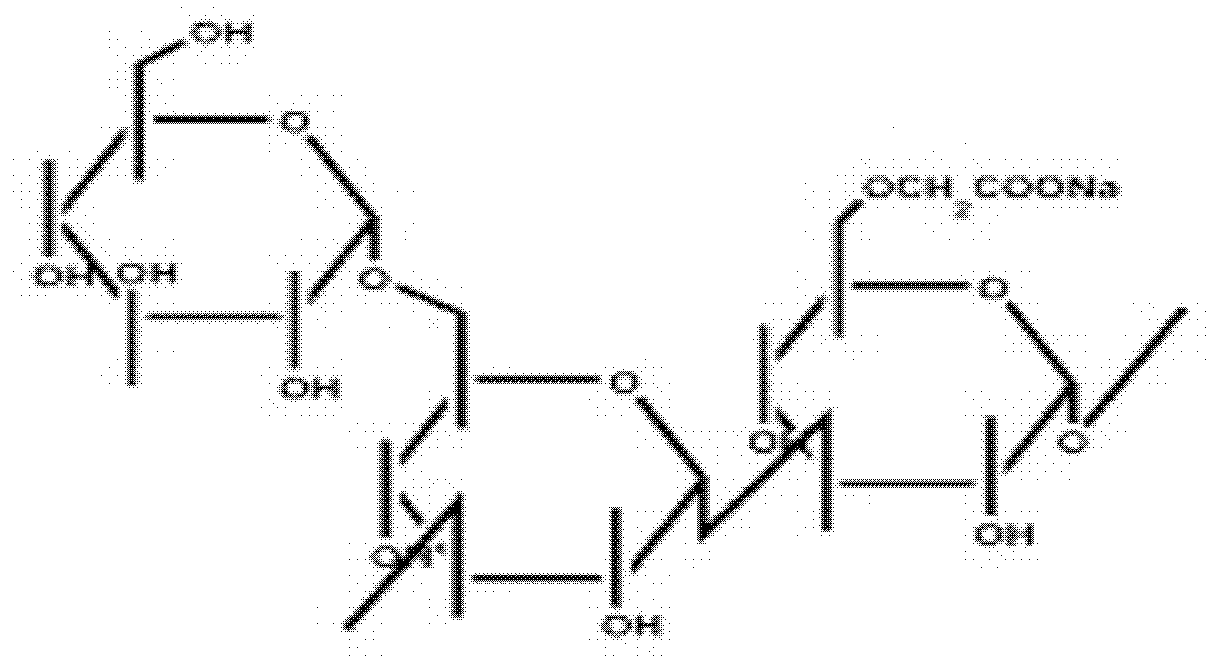Immunity reinforcing agent for Litopenaeus vannamei Boone
The technology of an immune enhancer, Vannabine, applied in the field of carboxymethyl zymosan, can solve the problems that the immune enhancer has no expected effect, the effect is not good, and the immunity and disease resistance are not significantly improved, so as to improve immunity and disease resistance, good effect, growth-promoting effect
- Summary
- Abstract
- Description
- Claims
- Application Information
AI Technical Summary
Problems solved by technology
Method used
Image
Examples
Embodiment 1
[0013] Example 1: Production of carboxymethyl zymosan with different degrees of substitution
[0014] Take 6.2ml of 30% sodium hydroxide solution and 62.5ml of isopropanol, and mix the two at 10°C to prepare a reaction system. Slowly add 5 g of zymosan into the reaction system, react at 10° C. for 1 hour, and keep stirring during the reaction to fully proceed the reaction. Another 2.2 g of sodium chloroacetate was dissolved in 7 ml of deionized water, and the 7 ml of sodium chloroacetate aqueous solution was quickly added to the above reaction system. The reaction system was reacted at 70°C for 2 hours, during this period, the stirring was continued to fully proceed the reaction. After 2 hours, the pH of the reaction system was adjusted to 7.0 with 6 mol / L hydrochloric acid solution; finally, the reaction system was dialyzed with deionized water for 72 hours to obtain a solution of carboxymethylzymosan without chloride ions. The solution was vacuum dried to obtain carboxymet...
Embodiment 2
[0016] Embodiment 2: the determination of carboxymethyl zymosan substitution degree
[0017] Dissolve 1 g of carboxymethyl zymosan in 15 ml of acetone and mix thoroughly. Add 3ml6mol / L hydrochloric acid solution to the above system, react for 30 minutes, during this period, keep stirring to make it fully react. The reaction solution was filtered, and the filter residue was washed with 80% methanol to make the filter residue neutral. The filter residue was baked at 50°C for 2 hours to fully dry it. Take 0.5g of the filter residue, dissolve it in 20ml of 0.2mol / L sodium hydroxide solution, and dilute to 100ml with distilled water. Take 25ml constant volume solution, add 1 drop of phenolphthalein reagent, titrate with 0.05M hydrochloric acid until colorless, record the volume V1 used. Take another 20ml of 0.2mol / L sodium hydroxide solution, and dilute to 100ml with distilled water. Take 25ml constant volume solution, add 1 drop of phenolphthalein reagent, titrate with 0.05mol...
Embodiment 3
[0020] Embodiment 3: Determination of dissolution rate of zymosan and carboxymethyl zymosan
[0021] Take 2g of zymosan or carboxymethyl zymosan, add it to 10ml of deionized water, and shake for 20 minutes. After 20 minutes, the above mixture was centrifuged for 20 minutes, the supernatant was taken, and dried at 100°C. Weigh the dried powder and count M.
[0022] Dissolution rate = M / 2 × 100%
[0023] After measurement and calculation, the dissolution rate of carboxymethylzymosan A was 33.76%. The dissolution rate of carboxymethylzymosan B was 41.06%. The dissolution rate of carboxymethylzymosan C was 62.69%. The dissolution rate of carboxymethylzymosan D was 86.56%. The dissolution rate of zymosan was 4.07%.
PUM
 Login to View More
Login to View More Abstract
Description
Claims
Application Information
 Login to View More
Login to View More - R&D
- Intellectual Property
- Life Sciences
- Materials
- Tech Scout
- Unparalleled Data Quality
- Higher Quality Content
- 60% Fewer Hallucinations
Browse by: Latest US Patents, China's latest patents, Technical Efficacy Thesaurus, Application Domain, Technology Topic, Popular Technical Reports.
© 2025 PatSnap. All rights reserved.Legal|Privacy policy|Modern Slavery Act Transparency Statement|Sitemap|About US| Contact US: help@patsnap.com



